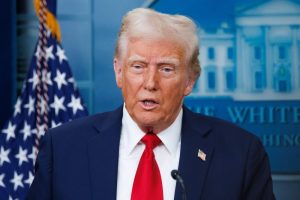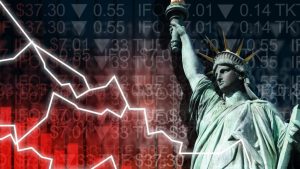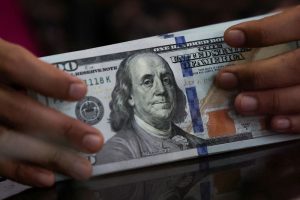Three weeks into his second presidential term, Donald Trump is largely getting his way on Cabinet nominees, deregulation, deportation, and Elon Musk’s dismantling of the federal bureaucracy. His biggest priority, a huge set of tax cuts requiring congressional legislation, is coming into focus.
One thing, however, is not going according to plan: interest rates. And it’s already getting under Trump’s skin.
“Interest rates should be lowered,” Trump posted on social media on Feb. 12. “Something which should go hand in hand with tariffs.”
Markets don’t see it that way — and unlike the many politicians Trump is steamrolling in Washington, markets can’t be bullied. Stubbornly high interest rates, in fact, could end up the bane of Trump’s second term.
The Federal Reserve sets short-term interest rates that mostly affect banks, and Trump has already trained his guns on Fed Chair Jay Powell. Trump blames the Fed for failing to head off the high inflation that raged for two years starting in 2022, and he blasted the Fed when it chose to forego a rate cut at its last meeting in January.
What most consumers and businesses care about is longer-term rates such as those on mortgages, car financing, and business loans.
Read more: How the Fed rate decision affects your bank accounts, loans, credit cards, and investments
Short- and long-term rates normally move in the same direction, which means the Fed has some influence over the borrowing rates most people pay. But markets have a say too. And since last September, long-term rates, represented by the yield on the 10-year Treasury bond, have gone up by roughly a percentage point even though the Fed has cut short-term rates by a similar amount.
The bond market doesn’t explain itself, but investors take the rise in 10-year rates to reflect concerns about higher future inflation. Those concerns are showing up in other data too, such as the University of Michigan’s monthly consumer surveys, which show that consumers increasingly think inflation will be higher one year and five years from now.
There are two main reasons inflation could worsen.
One is that price hikes in some spending categories, such as housing, insurance, and childcare, remain persistently high, along with egg-sploding egg prices caused by avian flu. There’s not much Trump can do about that. The other reason is that businesses and consumers expect Trump’s tariffs to raise prices by more than they’d ordinarily go up. There is something Trump can do about that. But so far, he’s choosing not to.
Tariffs are one of Trump’s favorite policy tools, and he’s applying them lavishly. Trump has imposed a 10% tariff on most Chinese imports and 25% tariffs on most imported steel and aluminum. He has threatened 25% tariffs on Mexican and Canadian imports along with customized “reciprocal” tariffs on a host of trading partners that put higher barriers to purchases of American goods than we do on theirs.


